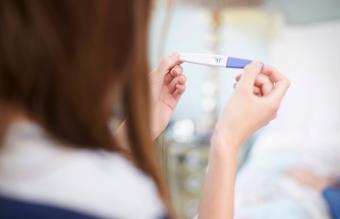
This basal body temperature (BBT) chart is a handy way to keep track of changes during your cycle. This information is helpful to have if you are trying to conceive or if you are trying to avoid conception. The chart can tell you when you ovulate during your cycle.
Using the Chart
While it is certainly possible to keep track of your basal body temperature on a regular sheet of paper or calendar, it is much easier if you use this form. Print several, because you'll need to use one form per cycle. This chart is made specifically to allow you to see a graph of your temperature changes on a daily basis.
What You Will Need
To use the chart, you will need the following:
- A basal thermometer (digital or glass)
- One chart per cycle
- A pen or pencil
Information Required
Every day, you will be required to complete the following information on the chart:
- Date
- Day of the week
- Time you take your temperature
- Temperature
- Dates of your period
- Dates of intercourse
- Dates where your body temperature may be affect by something else, such as illness
Instructions for Use

To properly chart your basal body temperature:
- Begin a new chart on the first day of your period.
- Place the thermometer next to your bed.
- Every night before bed, shake down the thermometer if it is glass.
- First thing in the morning before you get out of bed, eat, drink or smoke, place the thermometer under your tongue.
- Leave the thermometer for a full five minutes for a glass thermometer or three minutes for a digital thermometer.
- After the specified time, read the thermometer.
If you need help downloading the printable instructions, check out these helpful tips.
On the chart, do the following:
- Record the day, date, and time you took your temperature on the chart.
- Place a dot on the chart at the junction of the day and temperature.
- If you have intercourse that day, change the dot to a circle.
- If you have your period, use an X instead of a dot.
- If your temperature is elevated for a reason such as illness, change the dot to a star.
- Draw a straight line from yesterday's dot to today's dot, connecting all the dots throughout the month.
Reading the Chart
The chart will give you information about when you are likely to ovulate. Parents magazine notes that over a few months of tracking, you should see a pattern begin to emerge.
- The American Pregnancy Association notes ovulation occurs about 13 to 15 days before you start your period if your period is very regular.
- Early in your cycle, your temperature will be lower than later. The highest temperature reading in the first part of your cycle is the baseline temperature.
- About 24 to 48 hours after ovulation, you'll notice a rise above your baseline temperature of between .4 and .8 degrees. WebMD notes this is because your body releases progesterone, which elevates temperature. Your temperature remains elevated for the remainder of your cycle.
- According to WebMD, you are most fertile between two to three days before ovulation, as well as 12 to 24 hours after.
- Over the course of a few months, you should see a pattern emerge of which days of your cycle you ovulate, and you can plan intercourse accordingly.
Limitations
Using the BBT chart has limitations.
- It only shows you when you have ovulated, not when you will, which is why monitoring over time and comparing trends is important.
- Charting works best in women who have regular periods.
- Conditions other than ovulation may affect temperature, providing data that is more difficult to interpret.
Conditions that May Affect BBT
Some conditions may affect your temperature, making your BBT chart inaccurate.
- Illness
- Consuming alcohol the night before
- Lack of sleep
- Stress
- Very warm bed coverings
- Reading your temperature much earlier or later than you normally do (such as if you sleep in on weekends)
Birth Control
Some people use BBT as a method of birth control to predict when it is safe to have unprotected vaginal intercourse. Planned Parenthood notes "safe" days are those where you are not likely to be fertile, suggesting:
- The first phase of your period before ovulation should not be considered safe. Use alternative birth control.
- Safest days begin after the sustained temperature rise has lasted for three days.
Predicting Ovulation
BBT is one way of predicting ovulation. Other methods, such as using an ovulation calculator, can also help you predict your most fertile days of the month.







